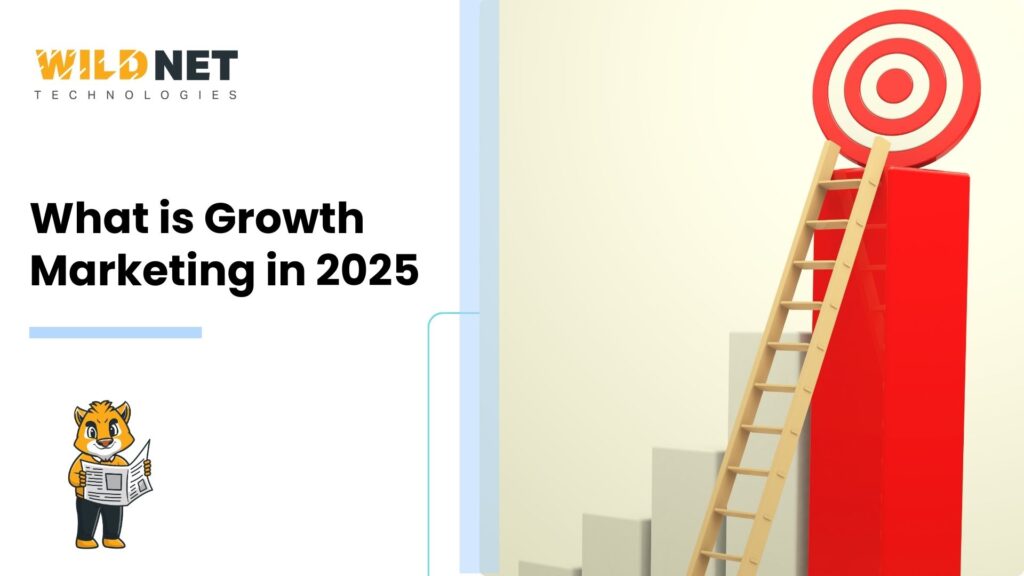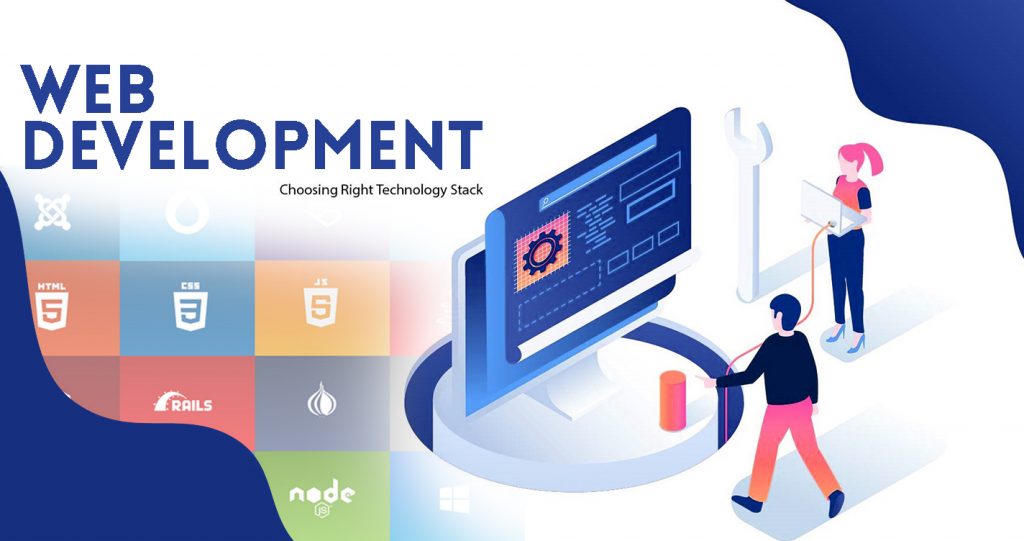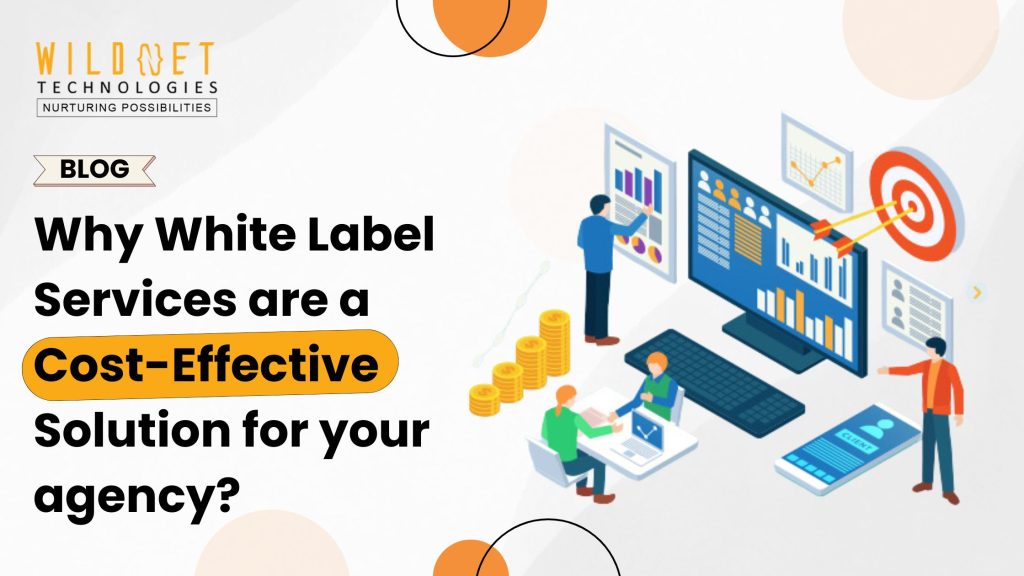In the dynamic world of business, growth is the ultimate goal. But how do companies achieve this growth?
Enter growth marketing.
Growth marketing is a data-driven approach to increasing a business’s customer base and revenue. It’s not just about attracting customers but also about retaining them and maximizing their value.
This article aims to demystify growth marketing. We’ll delve into its fundamentals, importance, and differences from traditional marketing approaches.
We’ll also explore actionable growth marketing strategies. These strategies can help businesses, especially those targeting younger customers, drive growth effectively.
Whether you’re a marketing professional, a business owner, or just someone interested in modern marketing techniques, this article is for you.
So, let’s dive in Understanding the Fundamentals of Growth Marketing
What is Growth Marketing?
Understanding the Fundamentals of Growth Marketing is essential in today’s competitive landscape. Growth marketing is more than just a trendy phrase. It’s a strategic approach rooted in data and experimentation. Unlike traditional marketing, which often focuses on top-of-the-funnel activities, growth marketing encompasses the entire customer journey.
At its core, growth marketing aims to acquire, retain, and engage customers. But it doesn’t stop there. It also maximizes their lifetime value. It’s about finding scalable ways to grow without massive increases in cost or complexity.
One key element of growth marketing is its focus on continuous improvement. Growth marketers constantly test, measure, and iterate. They rely on data to guide decisions and are open to shifting strategies. This adaptability is crucial as market conditions and consumer behaviors rapidly change.
Data is the backbone of growth marketing. It informs every decision and action. Marketers use analytics to track performance and identify opportunities for optimization. This data-driven mindset ensures campaigns are effective and aligned with business goals.
Growth marketing also stands out with its emphasis on cross-functional collaboration. It involves various teams, from product developers to customer service representatives. Working together, they ensure a cohesive strategy that delivers a seamless experience.
Moreover, growth marketing leverages various channels to reach and engage its audience. These channels include social media, email, and content marketing, each playing a critical role in the growth strategy.
In summary, growth marketing is an innovative approach focusing on nurturing relationships and creating lasting value. It’s about more than just reaching more people; it’s about reaching the right people at the right time with the right message.
The Evolution from Traditional Marketing to Growth Marketing
Traditional and growth marketing serve distinct roles in a business’s marketing strategy. Traditionally, marketing focused on brand awareness and broad reach. It aimed to capture attention through mass advertising channels, like TV and print. The metrics of success were often limited to impressions and reach.
With the advent of digital technology, the marketing landscape began to shift. Marketers realized the importance of engaging customers beyond initial acquisition. As businesses embraced digital platforms, they gained access to detailed data on customer behavior. This data became a game-changer, enabling more personalized and effective strategies.
Growth marketing emerged from this shift, prioritizing the entire customer lifecycle. It focuses on acquiring, activating, and retaining users holistically. Unlike its traditional counterpart, growth marketing is iterative. It involves rapid experimentation and testing to find the strategies that drive success.
Another significant difference is the focus on ROI and accountability. Growth marketing relies heavily on measurable outcomes. Every tactic is tied to a specific metric: conversion rates, engagement, or customer lifetime value. This ensures that resources are spent efficiently.
Additionally, growth marketing embraces an agile mindset. It requires quick adaptation to new insights and market trends. This flexibility allows businesses to innovate continually and stay ahead of competitors. As a result, growth marketing has proven particularly effective for startups and digital-first businesses seeking sustainable, scalable growth.
Overall, the evolution from traditional to growth marketing reflects modern consumers’ changing demands and expectations. It’s about creating meaningful connections that lead to long-term success.
Core Elements of Growth Marketing
Growth marketing has several core elements that distinguish it from traditional marketing approaches. These fundamentals ensure that strategies are both efficient and effective. The focus lies on not just attracting new customers, but retaining existing ones as well. Here’s a closer look:
- Data-Driven Decisions: Leveraging data insights for crafting strategies.
- Continuous Experimentation: Testing and refining approaches constantly.
- User Engagement: Building relationships for long-term loyalty.
- Multi-Channel Marketing: Reaching audiences across diverse platforms.
Data-Driven Decision Making
In growth marketing, data is the compass guiding all decisions. Marketers utilize analytics to understand behaviors and preferences. This allows them to create highly targeted campaigns that resonate with specific audiences. These insights drive dynamic strategies, ensuring that every action serves a purpose.
Data-driven decision-making minimizes guesswork, replacing it with precision and accuracy. This approach ensures that marketing spend is optimized and ROI is maximized. By relying on data, growth marketers can continuously refine their tactics for better outcomes.
A/B Testing and Continuous Experimentation
A/B testing is integral to growth marketing and offers a scientific method for improving strategies. By comparing two versions of a marketing element, businesses can identify which one performs better. This process of experimentation helps uncover what truly engages and converts users.
Continuous experimentation goes beyond mere testing. It involves adopting an iterative approach to marketing. By consistently experimenting, marketers discover new growth opportunities. This adaptability is key to staying relevant in an ever-changing market landscape.
User Engagement and Retention
User engagement is critical for retention and long-term growth. Engaged users are more likely to become loyal customers. They interact more with a brand, fostering community and trust. Strategies that boost engagement, such as personalized content and interactive campaigns, are essential.
Retention strategies focus on maintaining customer interest over time. They ensure that customers continue to find value in the brand once they acquire it. A strong focus on retention reduces churn and increases lifetime value, contributing significantly to sustainable growth.
Multi-Channel Marketing Approach
A multi-channel approach ensures that brands connect with customers on their preferred platforms. This strategy helps in reaching diverse demographics effectively. Businesses can maintain a consistent presence by using various channels like email, social media, and SEO.
Multi-channel marketing also allows for tailored messages across different platforms. This customization ensures the message aligns with the user’s journey and context. Integrating multiple channels enhances visibility and engagement, crucial for comprehensive growth marketing strategies.
Growth Marketing Strategies for Success
Successful growth marketing requires a strategic blend of tactics to attract, engage, and retain customers. The focus is on sustainable growth rather than short-term wins. A well-rounded strategy incorporates multiple approaches to maximize impact.
The key to success is the alignment of marketing strategies with business objectives. Every tactic should support broader goals. This alignment ensures that marketing efforts contribute meaningfully to the growth mission.
Customer-centricity is another cornerstone. Understanding the customer journey allows marketers to meet needs effectively at every stage. By anticipating customer behavior, brands can deliver personalized experiences that drive loyalty and growth.
Data and technology also play pivotal roles. Leveraging advanced analytics helps marketers to track performance and adapt strategies dynamically. This data-centric approach allows for more intelligent decision-making and resource allocation.
Innovative growth marketing strategies often involve creative problem-solving. Marketers must be willing to experiment with new ideas and embrace risk. Creativity distinguishes brands in a crowded marketplace and fosters customer engagement.
Finally, collaboration is essential for implementing growth strategies. Marketing teams should work closely with other departments to align efforts. This collaboration ensures consistency across all touchpoints, strengthens the brand message, and fosters growth.
Leveraging Content Marketing and SEO
Content marketing is a powerful tool for growth marketing. It involves creating valuable content that attracts and engages users. This could include blog posts, videos, or infographics aimed at educating and informing audiences. Practical content marketing builds authority and trust, essential for long-term brand loyalty.
SEO is integral to maximizing the reach of content marketing. By optimizing content for search engines, businesses improve visibility and attract organic traffic. SEO strategies include keyword optimization, link building, and on-page improvements. Content marketing and SEO ensure that the brand message reaches the right audience efficiently.
Implementing these strategies requires a deep understanding of target audiences. Content should address their needs and interests to resonate effectively. The right balance of content marketing and SEO enhances visibility and establishes the brand as a credible industry leader.
Utilizing Social Media to Engage Younger Customers
Social media platforms are indispensable for engaging younger customers. These channels offer direct communication, allowing brands to connect authentically. To engage effectively, marketers must understand the preferences of younger demographics. This understanding shapes content that resonates and encourages interaction.
Creativity is crucial in social media marketing. Innovative campaigns, interactive posts, and engaging stories can capture the attention of younger audiences. These strategies enhance brand visibility and foster community, which are crucial for building long-term loyalty.
Consistency and responsiveness are vital in social media strategies. Brands that regularly engage with their audiences on social platforms build stronger relationships. Prompt responses to comments and messages further enhance the user experience. This approach fosters connection and increases the likelihood of users advocating for the brand within their networks.
Marketing to Younger Customers: A Key Growth Strategy
Effectively marketing to younger customers is crucial for sustained business growth. This demographic represents a significant market with unique preferences and behaviors. Successfully reaching them can drive substantial brand engagement and loyalty.
Young consumers often set trends that influence broader market dynamics. Businesses that understand these trends can harness them to their advantage. This requires an agile marketing strategy that adapts to shifting preferences.
Technology plays a significant role in the lives of younger customers. They are digital natives who expect seamless online experiences. Brands need to prioritize a strong digital presence across all customer touchpoints.
Engagement is key when marketing to this audience. Interactive content and platforms that facilitate communication are vital. Young customers value authenticity and transparency and engage more with brands that reflect these values.
Finally, understanding the cultural and social issues concerning younger generations can enhance marketing efforts. Demonstrating corporate social responsibility and aligning brand and consumer values are essential for fostering deep connections with this demographic.
Understanding the Younger Demographics
Understanding the characteristics of younger demographics is essential to marketing effectively to them. Younger consumers are typically tech-savvy, having grown up in the digital era. They easily navigate the internet and social media, making these platforms crucial for engagement.
This audience tends to value experiences over material possessions. Brands that offer unique and memorable experiences often see higher levels of engagement. They respond well to authentic and relatable content that emphasizes storytelling and real-life experiences.
Younger customers are also highly informed and conscious of social issues. They appreciate brands that are socially responsible and environmentally conscious. Engaging with these themes in marketing strategies can create stronger brand affinity and loyalty.
Tailoring Strategies for the Digital-Savvy Audience
Marketing strategies for digital-savvy audiences must embrace technology and innovation. Leveraging the latest digital tools helps brands stay relevant. Interactive content, such as videos and quizzes, can capture the attention of younger users.
Personalization is another powerful tool in engaging digital natives. Tailoring messages to the individual’s preferences and behaviors enhances engagement. This approach involves using data insights to deliver personalized experiences that resonate.
Additionally, mobile optimization is crucial for this demographic. Many younger users primarily access content via mobile devices. Ensuring that mobile-friendly marketing efforts improve accessibility and user experience which are critical for driving successful engagement with this audience.
Measuring the Impact of Growth Marketing
Assessing the effectiveness of growth marketing initiatives is critical for sustained success. Understanding which strategies are working helps businesses optimize their efforts. This involves meticulous tracking of key performance indicators and metrics.
Growth marketing is a dynamic field that relies heavily on data. Collecting and analyzing this data allows marketers to make informed decisions, and the insights gained from this process drive future strategic adjustments and improvements.
Regular evaluation of growth campaigns ensures alignment with business goals. It helps identify areas of success and aspects needing refinement. Without this feedback loop, marketing efforts may fall short of their potential impact.
Moreover, measuring impact ensures efficient resource use. Marketing budgets are often limited, so understanding what yields the highest return is vital. This knowledge enables targeted investments that maximize growth and profitability.
Key Performance Metrics to Track
Several key metrics offer insights into growth marketing efficacy. Conversion rates are a primary focus, indicating how many users complete desired actions. This could range from purchasing products to signing up for a newsletter.
Customer acquisition cost (CAC) is another crucial metric. It helps determine the expense of acquiring a new customer. Balancing CAC with customer lifetime value (CLV) ensures profitability.
Additionally, monitoring the retention rate is essential. This metric shows how well a business retains its customers over time. High retention rates often correlate with strong brand loyalty and satisfaction.
The Role of Analytics in Growth Marketing
Analytics is the cornerstone of successful growth marketing strategies. It enables marketers to track user behavior and campaign performance. With this data, businesses can fine-tune their strategy for optimal results.
Tools like Google Analytics provide comprehensive insights into web traffic and user journeys. They help identify which marketing channels are most effective at driving traffic and conversions. These insights lead to more efficient resource allocation.
Beyond web analytics, businesses use specialized tools for deeper insights. These tools can help segment audiences and personalize marketing strategies. Real-time data allows marketers to respond swiftly to changing consumer preferences and market trends.
Real-World Examples of Growth Marketing in Action
Growth marketing has transformed how companies approach expansion and customer engagement. Numerous businesses have effectively implemented growth marketing techniques to achieve remarkable success. Let’s explore a few instances that illustrate the power of this approach.
Dropbox is a classic example of growth marketing success. The company famously used a referral program to expand its user base rapidly. By offering extra storage for every new user referred, Dropbox leveraged its existing customers to fuel growth.
Airbnb also utilized growth marketing strategies to become a global leader in accommodation. Through targeted Craigslist integration, Airbnb gained vast exposure to potential renters. This smart move helped them exponentially grow their listings and user base in the early days.
Slack, the popular communication platform, adopted a unique growth strategy focused on user experience. By offering a freemium model, teams could use essential features at no cost. As more users realized its value, Slack’s growth surged, and many teams transitioned to paid plans.
These examples reveal diverse approaches to growth marketing. Each company tailored its strategies to its industry and audience, achieving exceptional results. Growth marketing’s adaptability makes it an invaluable tool for businesses seeking sustainable expansion.
Conclusion: The Future of Growth Marketing
Understanding the Fundamentals of Growth Marketing is key to navigating what lies ahead. Growth marketing is poised to be integral to future business strategies. Its emphasis on data, experimentation, and customer-centric tactics aligns with modern market needs. As technology evolves, growth marketing will adapt to new tools and platforms, seamlessly integrating with broader digital marketing services to create unified, results-driven strategies.
Emerging trends like artificial intelligence and machine learning will further refine growth strategies. These innovations promise to enhance personalization and predictive analytics. Businesses that embrace growth marketing and invest in comprehensive digital marketing services will likely stay competitive and drive meaningful, sustainable growth. With the ever-shifting digital landscape, growth marketing remains the pathway to success for savvy marketers and businesses.
FAQs on Growth Marketing
Q. What is the primary goal of growth marketing?
Ans. The main goal of growth marketing is to expand a business’s customer base and drive revenue.
Q. How does growth marketing differ from traditional marketing?
Ans. Unlike traditional marketing’s long-term, campaign-based strategies, growth marketing focuses on data-driven, agile tactics.
Q. Can growth marketing strategies be applied to any business?
Ans. Yes, growth marketing strategies can be tailored and applied to businesses of all sizes and industries.
Q. What skills are essential for a growth marketer?
Ans. A growth marketer needs analytical skills, creativity, and expertise in data analysis and strategic thinking.
Q. How important is A/B testing in growth marketing?
Ans. A/B testing is crucial for refining strategies and optimizing performance through continuous experimentation.
Read More
Inbound vs Outbound Marketing: Key Differences Explained
How Can Email Marketing Fuel Your Overall Inbound Strategy?
How Smart Agencies are Maximizing ROI with White Label Digital Marketing?
How Can Audience Segmentation Enhance Your Inbound Marketing Efforts?






